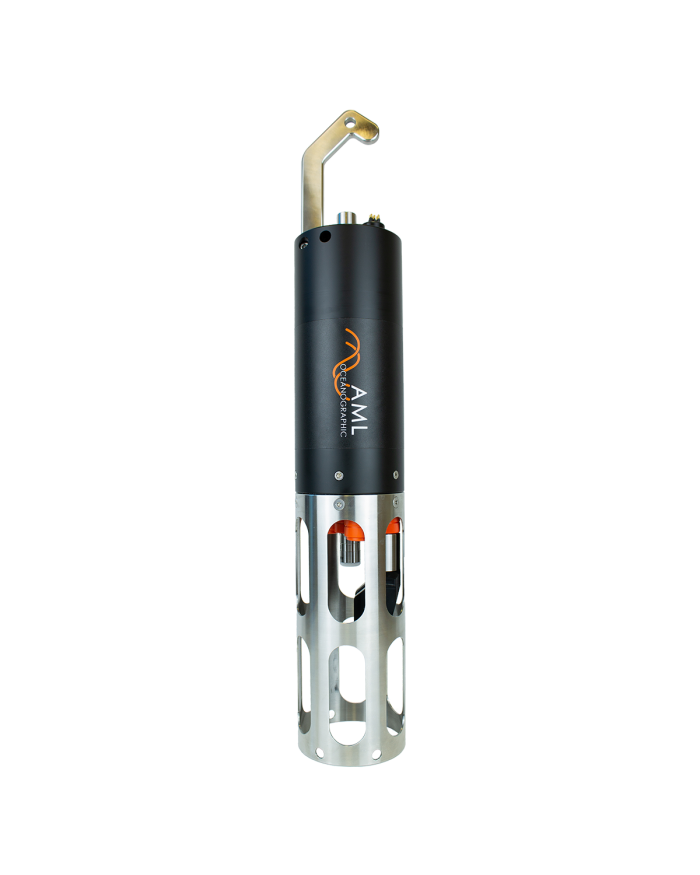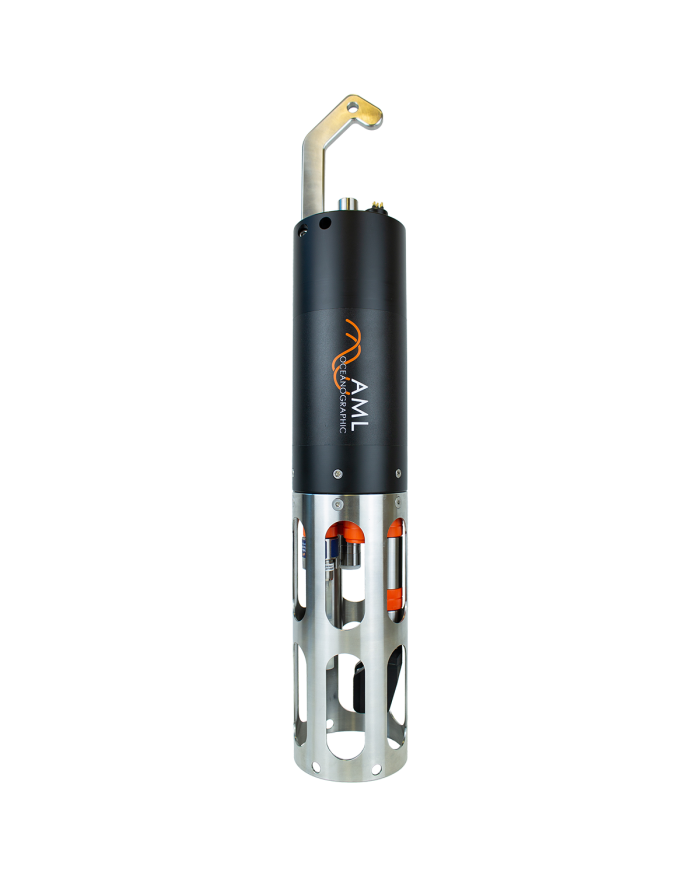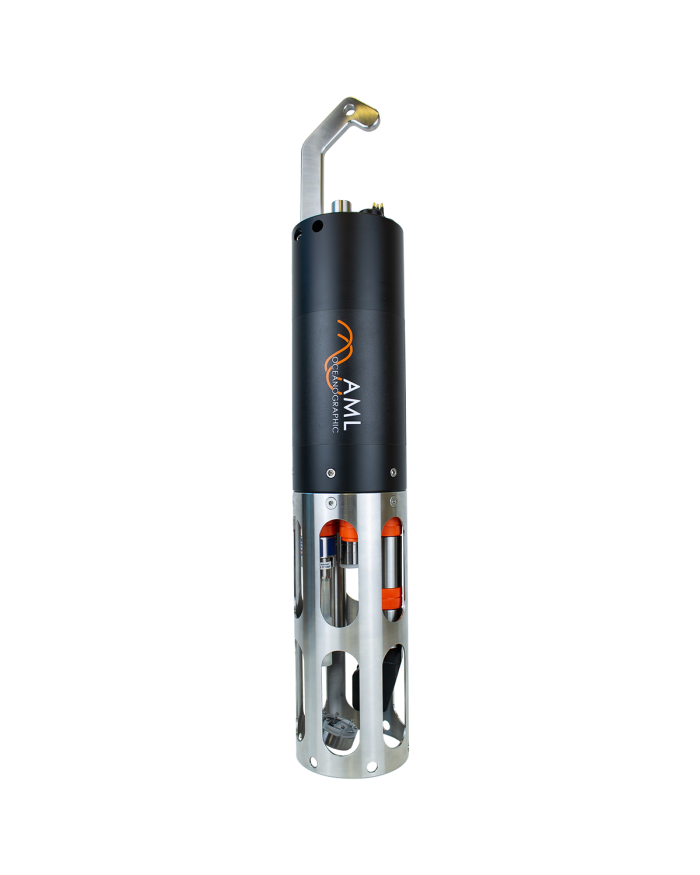AML-6 Sondes
Configurable. Flexible. Foul Free.
The AML-6 is a multi-parameter sonde, designed to combine CTD data with other oceanographic parameters such as Dissolved Oxygen, pH, ORP or Fluorometric sensors. This instrument has six sensor ports on the endcap; sensor payload is modular and can be field-swapped to meet project requirements. The AML-6 can be equipped with UV Biofouling Control, ensuring data quality and extended maintenance-free time-frames, without contaminating the oceans with TBT or other harmful chemicals.
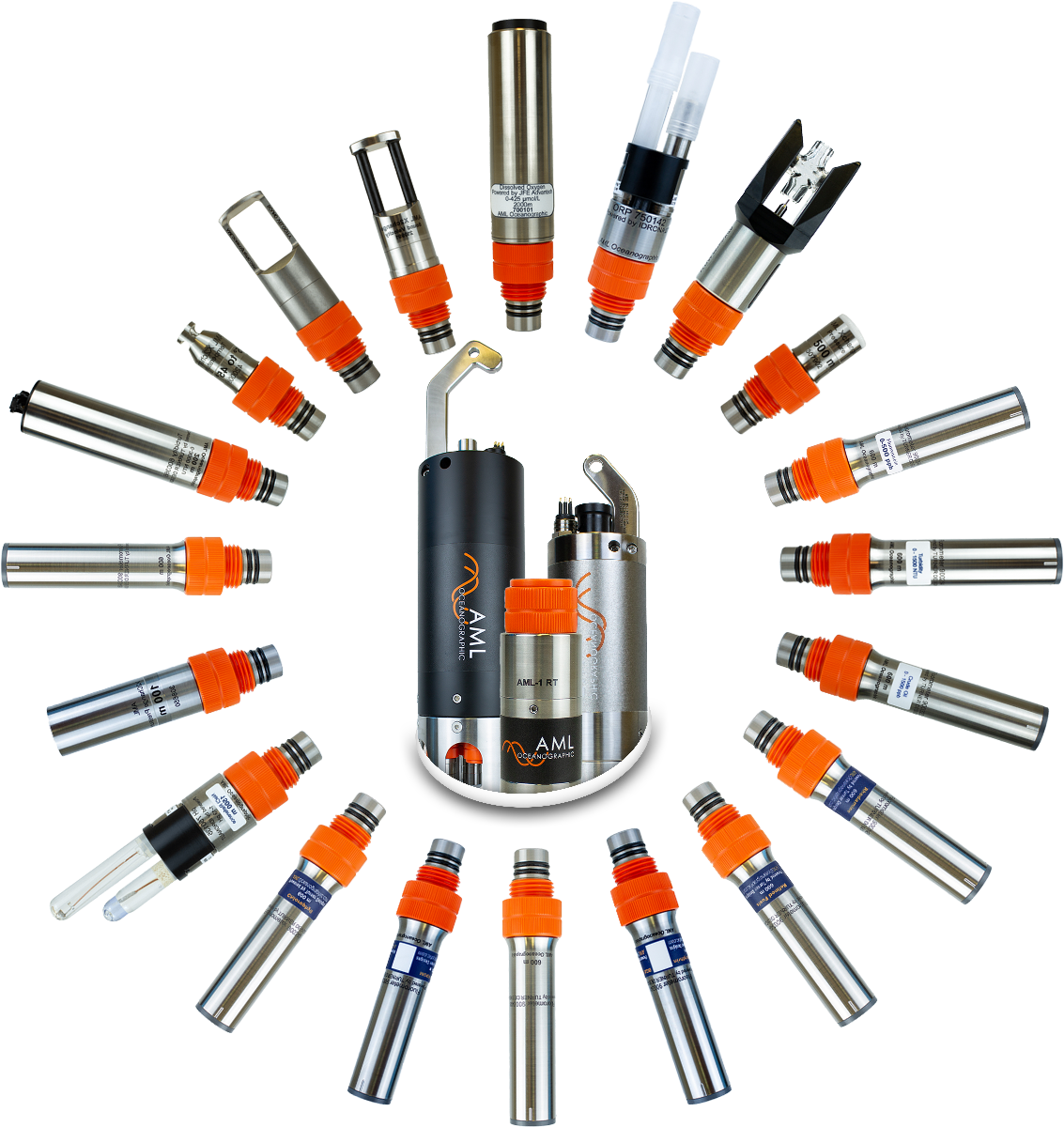
AML Oceanographic Ltd. has more than 40 years of experience manufacturing oceanographic sondes, data loggers, and probes. The AML-6 comes in three distinct versions: RTS (Real-Time), LGR (Logger), and XC (Dual Capability).
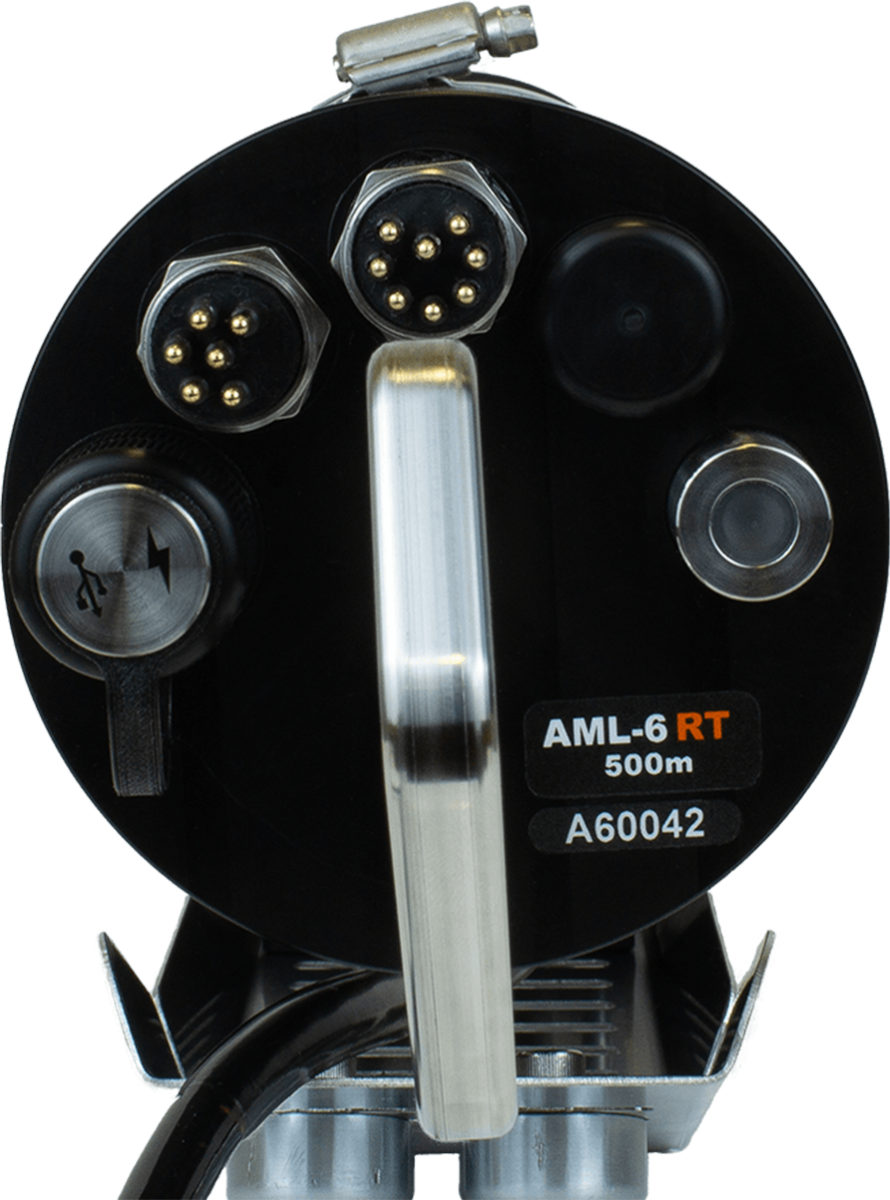
AML-6 RTS - (Real-Time)
This entry level version of the AML-6 is commonly deployed on buoys and underwater observatories, as well as on ROVS and AUVs. The AML-6 RTS is designed for real-time data streaming, and has neither battery nor memory. A bulkhead connector brings power to the sonde and streams data back to the user.
Common use cases include:

AML-6 LGR - (Logger)
The industry standard for high accuracy profiling, the LGR is predominantly used for water column work. This version of the AML-6 comes with a Lithium Ion battery and onboard memory. Data transfer is effected via WiFi or USB connectivity. To maximize reliability, the sonde's power is turned on / off with a magnetic switch rather than a bulkhead connector.
Common uses cases include:
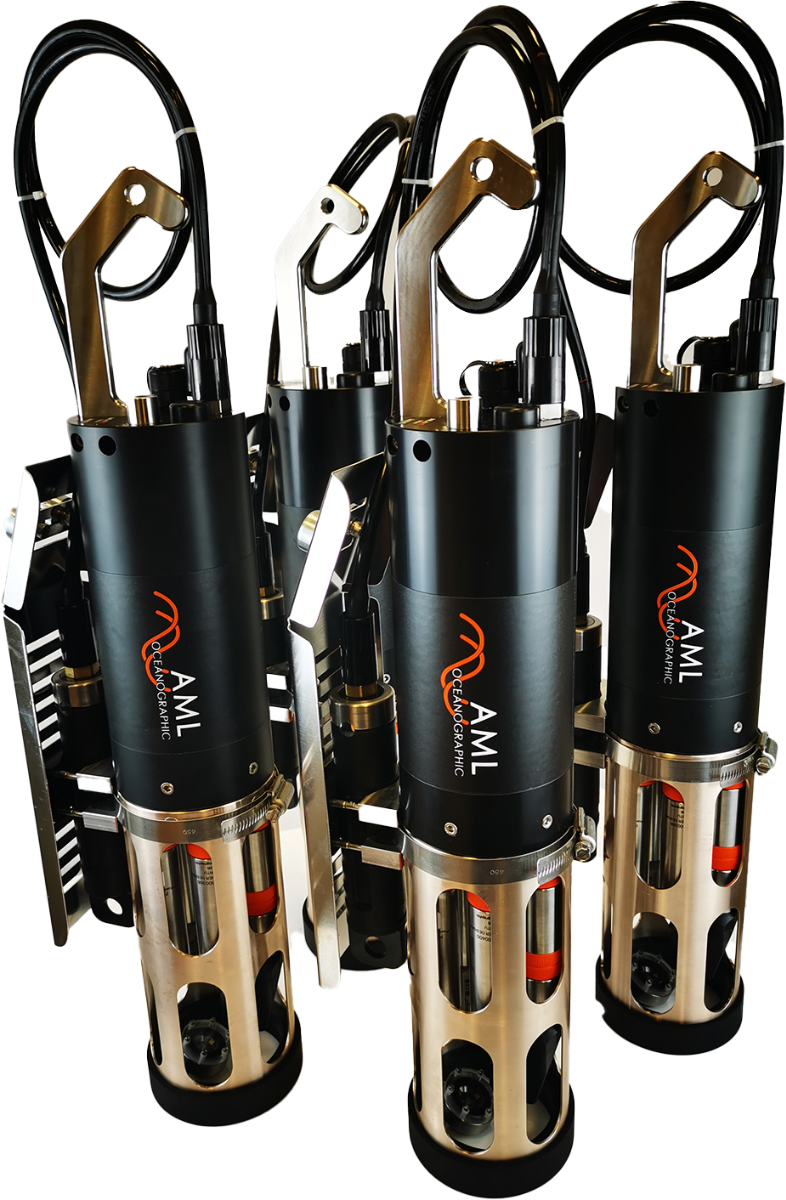
AML-6 XC - (Dual Capability)
The premium version of the AML-6 includes both data logging and real-time streaming features. This dual capability version of the sonde is valuable to those who value redundancy, either redundancy of data logging or redundancy of power supply. Similarly, this version of AML-6 is useful for those who have requirements that vary mission by mission.
Common uses cases include:
Request More Information
| Feature | LGR | RTS | XC |
|---|---|---|---|
| Sensor Ports on End Cap | 6 | 6 | 6 |
| Optional External Sensors | Up to 2 | Up to 2 | Up to 2 |
| Optional Biofouling Control | Street Lamp UV (500 m) | Street Lamp UV (500 m) | Street Lamp UV (500 m) |
| GPS | Yes - (500 m) | No - (500 m) | Yes - (500 m) |
| Data Communications | WiFi (500 m), USB-C | RS232, RS485 | WiFi (500 m), USB-C, RS232, RS485 |
| Input Voltage | 8-30 VDC | 8-30 VDC | 8-30 VDC |
| Housing Material - (Depth Rating) | Acetal - (500 m), Titanium - (6000 m) | Acetal - (500 m), Titanium - (6000 m) | Acetal - (500 m), Titanium - (6000 m) |
| Protective Cage Material | Stainless Steel | Stainless Steel | Stainless Steel |
| Dimensions | 600 x 100 mm | 600 x 100 mm | 600 x 100 mm |
| Weight in Air | 4.0 kg (500 m), 4.9 kg (6000 m) | 4.0 kg (500 m), 4.9 kg (6000 m) | 4.0 kg (500 m), 4.9 kg (6000 m) |
| Weight in Water | 2.1 kg (500 m), 2.8 kg (6000 m) | 2.1 kg (500 m), 2.8 kg (6000 m) | 2.1 kg (500 m), 2.8 kg (6000 m) |
Looking for a multi-parameter instrument instead? Click here to learn more about the AML-3, an instrument with up to 3 sensor ports.
The AML-6 is an oceanographic sonde designed for diverse data collection. The AML-6 can take up to 8 sensors on the endcap, allowing modular sensor swapping to suit specific project requirements. Certain sensors, such as CT and SVT, offer dual-parameter measurements.
The primary difference between these two versions of the AML-6 is power and memory. The LGR has a lithium ion battery and onboard memory; the RTS does not.
AML’s modular approach to sensor installation means that an AML-6 can be used with a wide variety of field-swappable sensors. Sound velocity, conductivity, temperature and pressure are the most frequently deployed sensor payloads. However the AML-6 can also accommodate Turbidity, Dissolved Oxygen, pH, ORP or fluorometric sensors.
These sondes feature a magnetic switch adjacent to the shackle for easy on/off control. The use of a magnetic switch maximizes reliability.
Yes, but only the AML-6 LGR & the XC. The AML-6 RTS does not have this capability.
Communication varies based on the instrument's version and depth rating. For the RTS version communication is through RS232 or RS485. For shallow (500 m) versions of the LGR or XC, communication is via WiFi or USB-C. For deep (6000 m) versions of the LGR or XC, communication is via USB-C only. In specific applications the XC can also communicate via RS232 or RS485 only.
The AML-6 is most frequently used for science projects with varying sensor payload requirements. The same sonde can also be deployed on buoys and underwater observatories to calculate salinity and density. AML-6 can be a perfect fit for general long term deployments.





